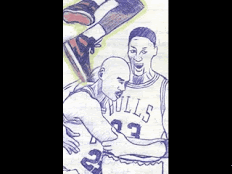
Women produced various pots and baskets. The most common were Ivua (food basket), Leuta (food cover), Kubi (sauce pot), and Ajiko (Pot for preparing millet flour). The Lugbara also did some iron smelting and the ondoaru (clever ones) made iron implements for the rest of the population. Among the Lugbara, there was also another ethnic group known as Okebu which specialised in iron smelting.
Evu (Pronounced Ehh Vu) are all made from sorghum shoots or stems and used for gathering harvests. Evua and Kobia are used as plates or for carrying food. Walaka is used for eating. Bizua is for carrying bean and millet seeds when sowing. Another one is called Ovua.
Sekua (a three sided Gobea) is used for eating nuts or food. Before metallic saucepans were imported from India and other places, food utensils were made from mud. Drinking cups were made from Egaa (Pronounced as Ehh Gah) cut from a plant called Ireje which grows like a gourd. After it ferments in the soil, it is split into two. Ega Bere (calabash) is used for alcohol.
The Otaku pot is used primarily for cooking food. An Otakua pot with a wider opening is used for eating. The biggest Lugbara pot Obi (pronounced Oh Bee) is for alcohol. According to Sara Avumaru (Andrua), an auntie from Aliba Village in Ayivu county, fermented maize or millet was dried and then cooked to brew alcohol.
Ogea is used for harvests. Zukulu is for storing and drinking milk.
Luku (or Luru), is used for carrying kids... Cow vaseline (Odu) Nyure was smeared on the baby. It was mixed with Kumra (Plant Oil) and cooked before being applied. The Baka (Rope end) in the Luku was smeared with Eraka, the red soil that gets caught on your foot when you step into a pond or at the edge of a river, so that the baby looks nice.
Iyi Atrebi never grows on dry land. Leaves blossom in water. The Lugbara were naked in the past. Women wore leaves, but the waistband was made with hides. Walls on houses were constructed with wet mud or pati. Bolo Bara (a type of wood) was tied to other pieces of its kind using grass. The door was called Tiko. Some Lugbara would sleep on the soily floor in the house, but the very inventive ones wove reeds (Ozu) to make a bed (Kitanda).
There are no totems (holy symbols) among the Lugbara but there are taboos on eating certain foods such as mushrooms (Drika) and guinea fowls (Ope). The taboos refer to legends that used to explain why certain clans broke away after quarelling over food. Traditionally, the Lugbara put 'Oce', rainbow shaped tatoos (permanent scars or tribal marks) on the face. For the women alone, marks were made around the navel. Both sexes used to remove six of the lower teeth (incisors). A British administrator Major Stigand who came from Sudan and visited the Lugbara country in 1911 observed that practically all the Lugbara had drills in both lips and wore in them one or more brass rings. A number of holes were also drilled around the edge of the ear and in these a number of small brass rings looking like a chain were affixed. Red earth (Eraka) was mixed with oil or fat and commonly used for smearing the body, giving the skin a reddish look. Unlike the Lendu, the Lugbara did not practice circumcision as part of their custom.
Property Ownership: Land was categorised into virgin, fallow and cultivated land. All land within a clan was communal.
Cattle were said to belong to the whole clan and the Opi in particular as chief custodian. The wealthy people Barukuza had a lot of food, cattle and wives. For this reason, they wielded power next to the Opi. A married woman could not claim independent ownership of property. A woman could only control food. Here she was free and could deliberately starve her husband. He would not put up a fight. Children like women could not own property as there was no need for the lineage or clan heads (Opi) to take over.



